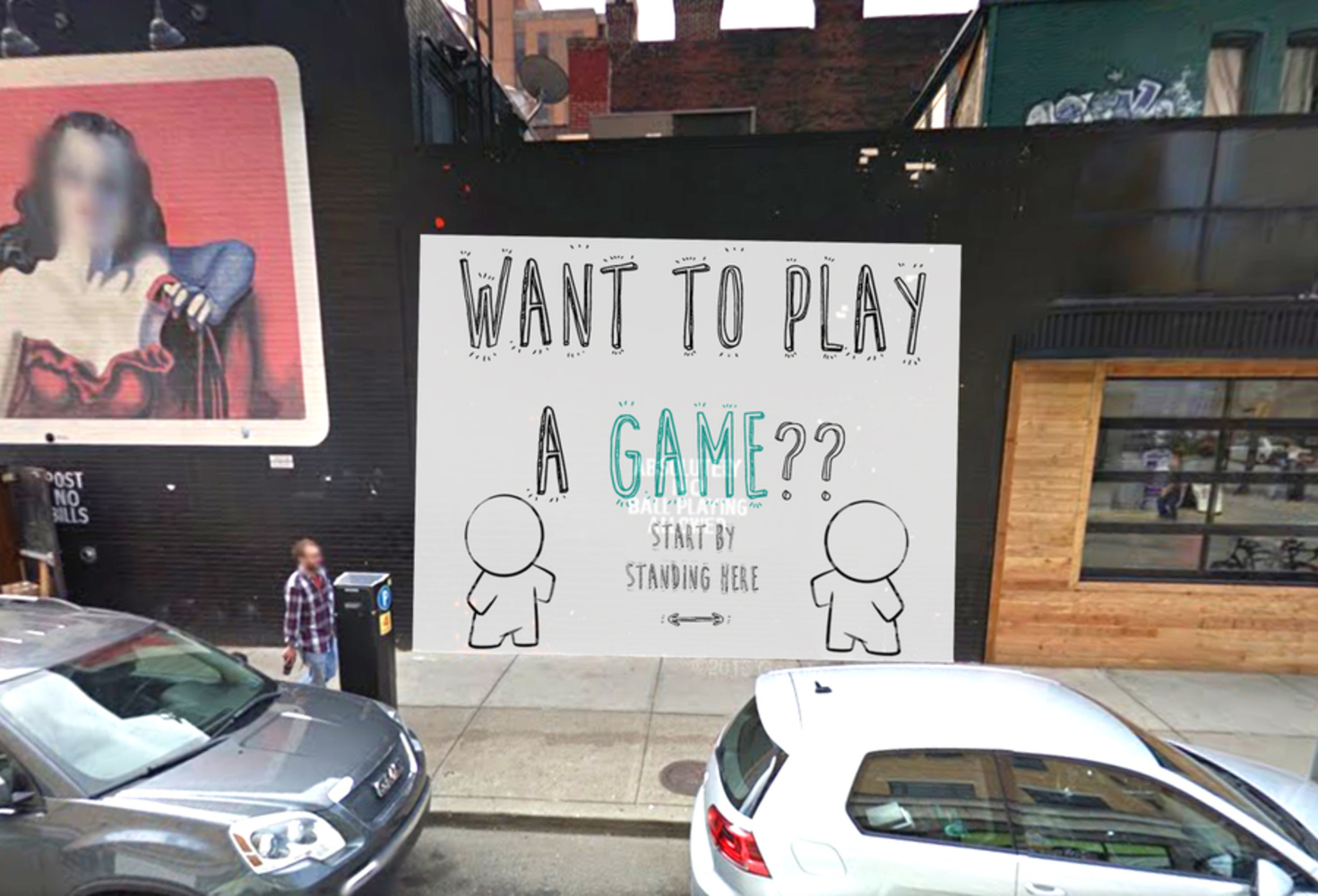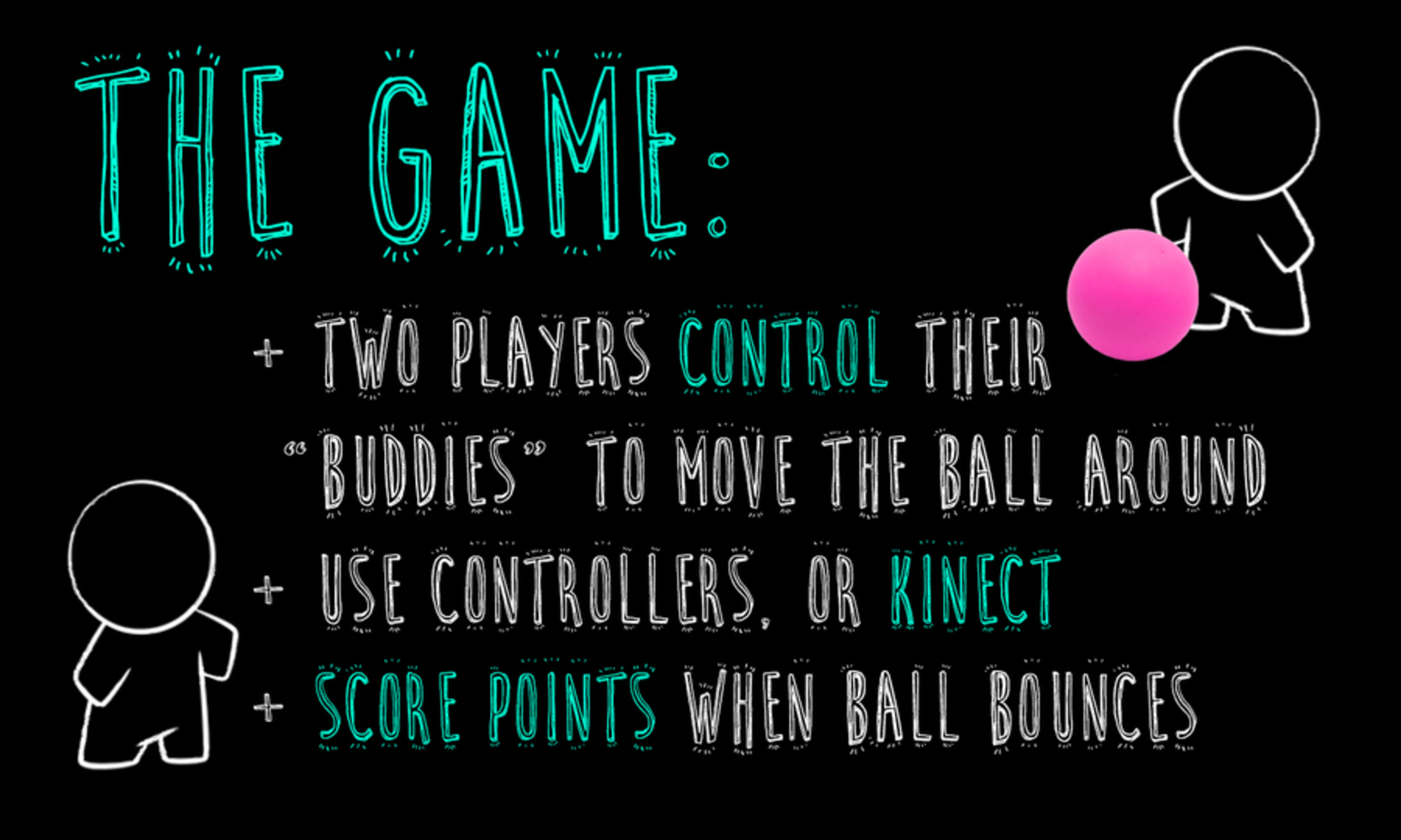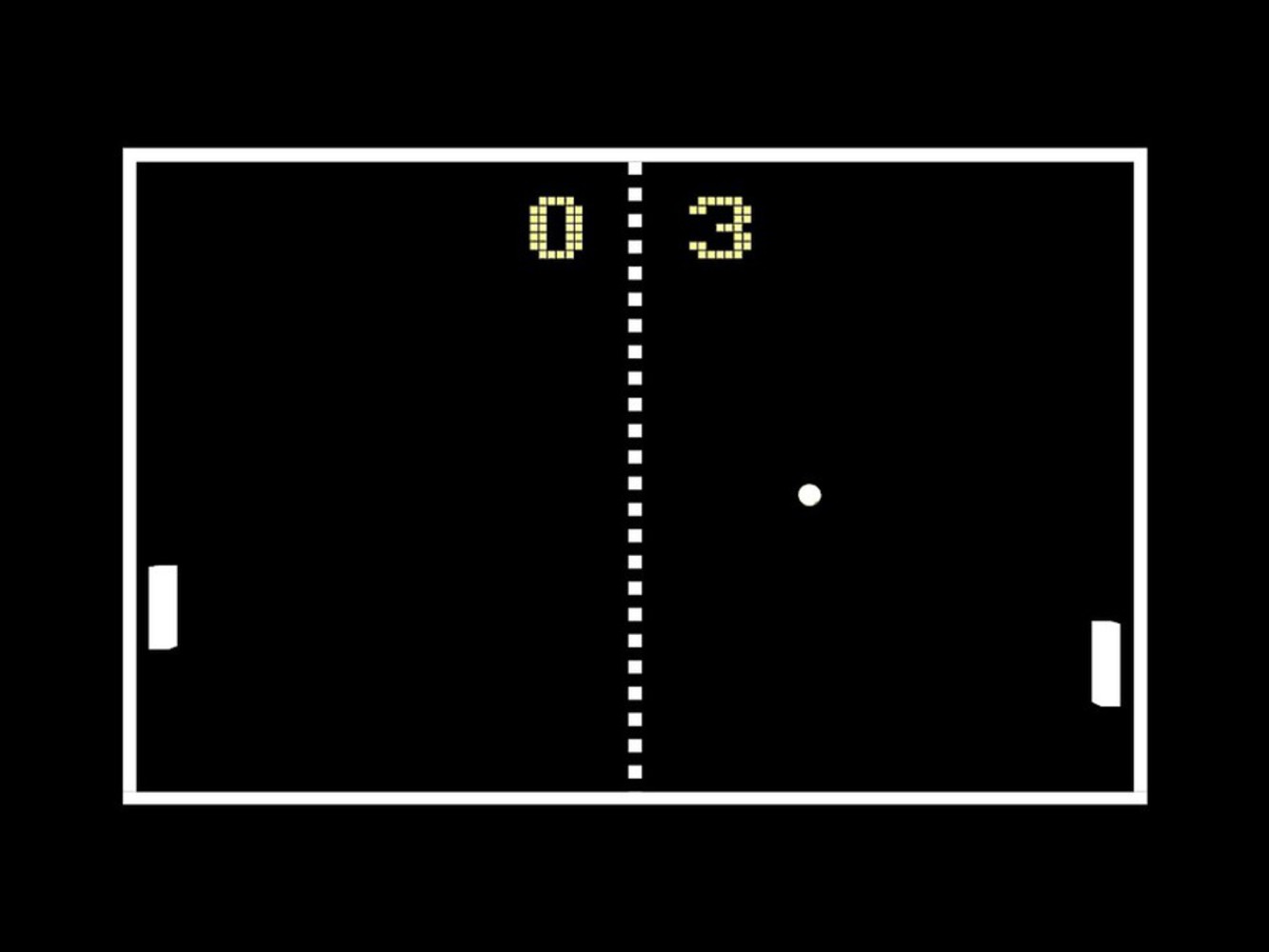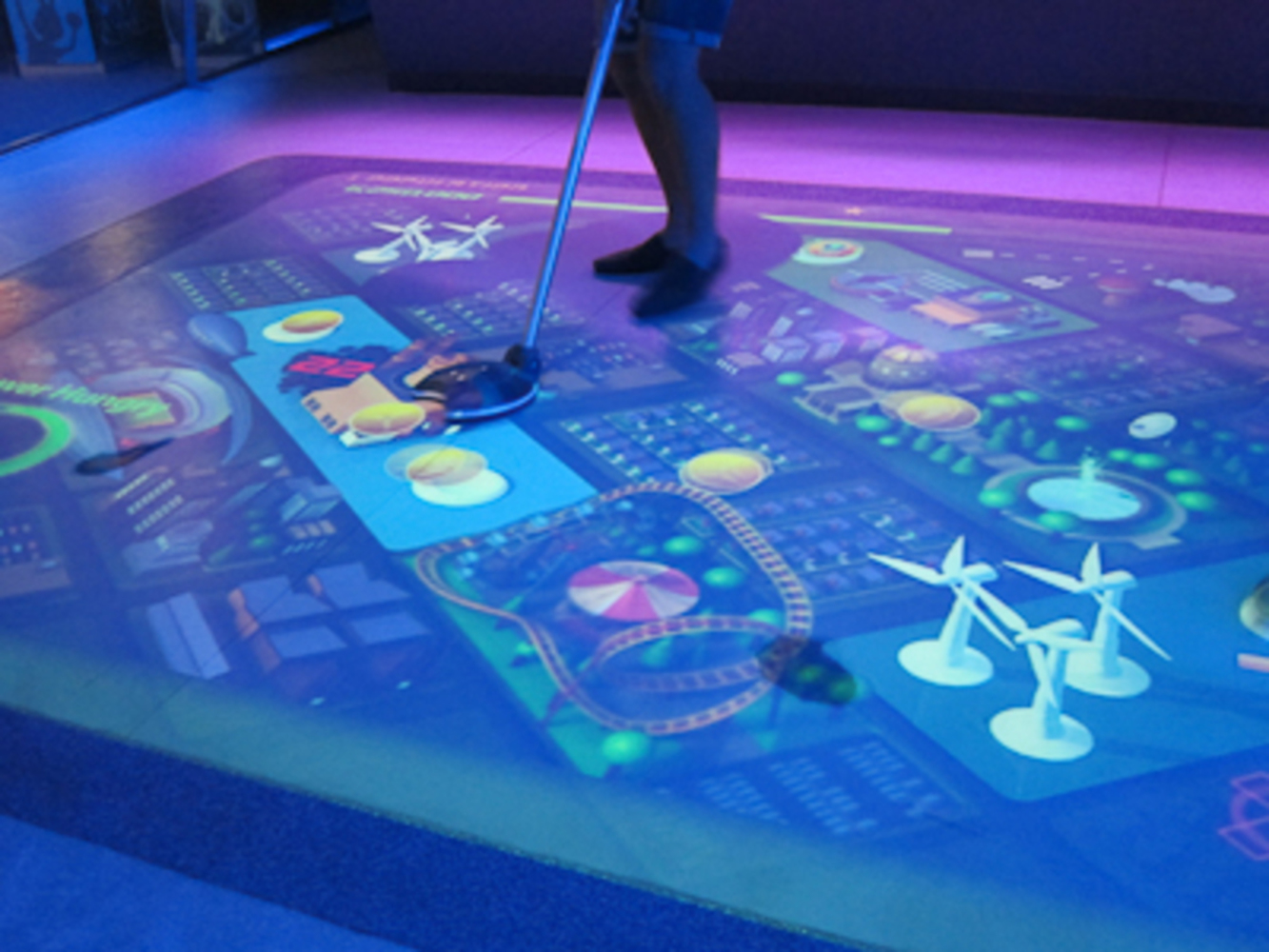Process
Before settling on the game approach, our project ideas were much wider. Notably, we considered creating an "unexpected performance" by placing a small camera somewhere unexpected and projecting the video feed somewhere similarly unexpected, but highly visible (ie. the side of Wean).
Once we chose our realized idea, we started as large as possible, knowing that we might not get to all the details. We then generated a collection of elements we wanted to incorporate. Some of those ideas were:
- Physical play using the Kinect
- One-off games or more intensive tournament style system
- Gravity, so the game feels like you're playing it in real space
- Scoreboard, so people could have a connection with past users of the game
- Work WITH the surrounding environment, rather than create something to project /display over it.
- Direct engagement with passing people to invite them to play, ie. 'Hey you! Wanna play a game?'
- Game initiation by getting two people to stand in the indicated spaces
Obviously, our final product didn't include all of these details and although some were left out due to implementation issues, some things were cut as design decisions. We definitely opted for the one-off game over tournament play so that people could have a 'walk up and play' experience without feeling committed to the time. The scoreboard offered a particular challenge to implement while maintaining a purely body based interface. We first decided it would not mesh with the overall game experience and chose to end games on a 'first to 3' basis rather than timed points system. Once we decided to switch to controllers, we considered bringing it back as a way to reengage community interaction that might have been lost in the move from body-tracking (and even mostly implemented it!), but ultimately we were too short on time to fully realize it.
We had high hopes for the Kinect, and it certainly still seems like an attainable goal. Technically, the system would have fit neatly into our project and really brought out some of the ideas we were aiming to use, but we ran into technical problems with having hardware powerful enough to run the Kinect and had to back out on the idea pretty last minute.
Our final product ended up being more of a compromise with technology requirements than we'd hoped, and it definitely lost something by being displayed on a screen rather than projected, as well as being played with controllers rather than motion control. However, these issues were largely temporal and our design experience was much more fleshed out. While we encountered a large and unexpected block, we were able to adapt to the problem and still bring out a fun and engaging experience.
Our version control was poorly maintained (due to not all of us being familiar with Git), albeit extant and posted here.




